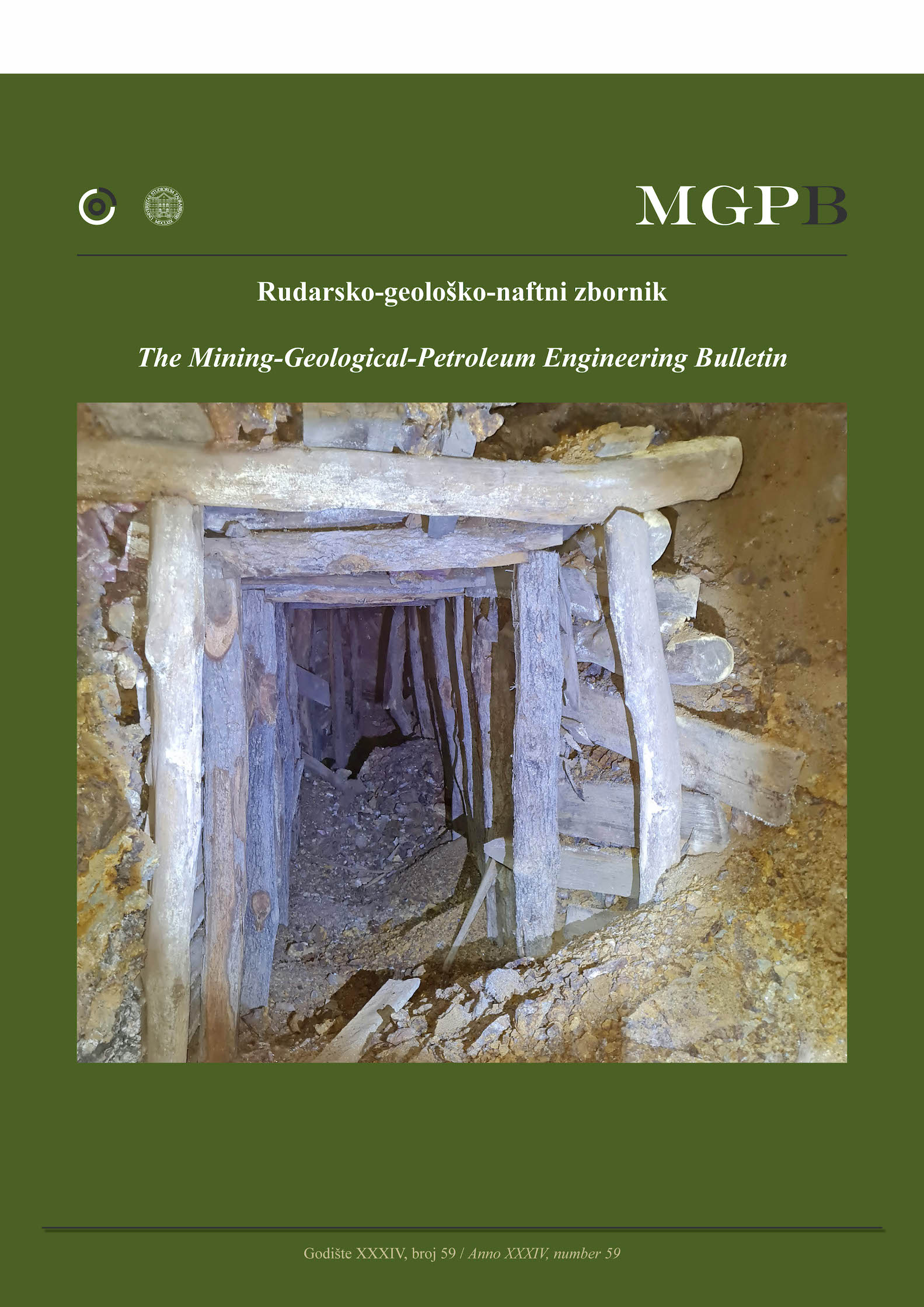The mechanism of Kaiser effect in phyllite under indirect tensile loading
DOI:
https://doi.org/10.17794/rgn.2022.3.2Keywords:
Acoustic emission, Kaiser effect, Peak Frequency, phyllite, Brazilian tensile testAbstract
Determination of in-situ stress serves as an important step in the design and construction of civil and mining projects, among others. Conventional methods of the in-situ stress measurement are time- and cost-intensive. Therefore, application of low-cost yet rapid methodologies for in-situ stress evaluation has been increasingly regarded by researchers. The Kaiser Effect-based acoustic emission method is one of such novel approaches to the in-situ stress evaluation. Not only the point at which the Kaiser Effect occurs, but also the mechanism of the Kaiser Effect is of paramount importance. In this research, acoustic emission tests were conducted on phyllite rock samples under Brazilian tensile loading to collect a variety of acoustic data including the amplitude, rise time, count, duration, and energy. Then, the Kaiser Effect point was determined using the collected data on acoustic parameters, with its occurrence mechanism investigated. In addition, mathematical transformations were adopted to transform the acoustic signal from the time domain to the frequency domain, where the peak frequency was analyzed. Results of RA/AF ratio analysis showed that the acoustic emission was sourced from tensile micro-cracks. Moreover, the high level of energy indicated a high intensity of crack formation at the Kaiser Effect point. The large number of received hits showed that the count of generated cracks increases abruptly within the range of Kaiser Effect. In addition, the obtained high value of the peak frequency implied that the crack growth rate is high at the Kaiser Effect point.Downloads
Published
How to Cite
Issue
Section
License
Copyright (c) 2022 authors and journal

This work is licensed under a Creative Commons Attribution 4.0 International License.
Creative Commons-BY
Authors who publish with this journal agree to the following terms:
In agreeing this form, you certify that:
- You read the ethical codex of the RGN zbornik available at journal web.
- You submitted work is your original work, and has not previously been published and does not include any form of plagiarism.
- You own copyright in the submitted work, and are therefore permitted to assign the licence to publish to RGN zbornik.
- Your submitted work contains no violation of any existing copyright or other third party right or any material of an obscene, libellous or otherwise unlawful nature.
- You have obtained permission for and acknowledged the source of any illustrations, diagrams or other material included in the work of which you are not the copyright owner.
- You have taken due care to ensure the accuracy of the work, and that, to the best of your knowledge, there are no false statements made within it.
- All co-authors of this submitted work are aware of, and in agreement with, the terms of this licence and that the submitted manuscript has been approved by these authors.
Publication licence
You retain copyright in your submitted work, according to journal license policy (CC-BY). By signing this form you agree that RGN zbornik may publish it under the publication licence. In summary the licence allows the following:
Anyone is free:
- To copy, distribute, display, and perform the work.
- To make derivative works.
Under the following conditions:
- The original author must always be given credit.
- The work may not be used for commercial purposes.
- If the work is altered, transformed, or built upon, the resulting work may only be distributed under a licence identical to this one.
Exceptions to the licence
In addition to publishing the work printed under the above licence, RGN zbornik will also enable the work to be visible online.
The journal editorial can change the licence rules anytime but it cannot retroactively restrict author(s) rights.


